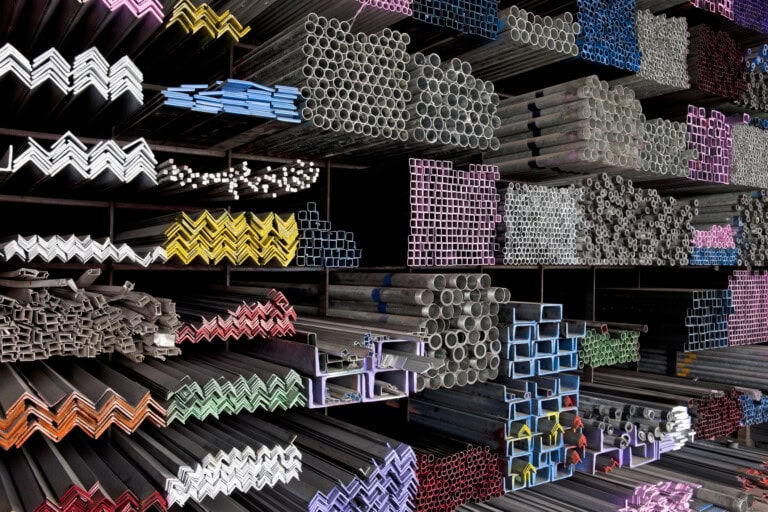What does it mean to be 100% circular? Metrics, Benchmarks and Indicators for the Circular Economy

A circular economy embodies the fundamental principles of minimising waste and preserving the value of materials. These core aspects are a good starting place for how we look at measuring circularity. UKGBC has previously published the ‘deep dive’ into circular economy metrics. This blog post will touch on some of these metrics, other proposed metrics and their applications and limitations.
We started the discussion by thinking about the definition of what a ‘100% circular’ building could be, filtering back into how we can measure circularity in our projects. The table below outlines some of our thoughts on what a 0% and 100% circular building would look like. It is worth noting that these are not all the considerations that are needed to assess the circularity of a building:
| Metric | 0% Circular | 100% Circular |
|---|---|---|
| Material waste | All waste sent to landfill | No waste, all materials reused or retained |
| Material Retained | All materials from an existing building are sent to landfill. | All materials retained in-situ or deconstructed and sent to second-hand market |
| Adaptability and disassembly (1) | Chemically bonded, composite systems that allow for no ability to change elements to fit a new purpose | Mechanical connection, no chemically bonded materials and the ability to remove materials as a whole and replace them to allow for new use |
| Flexibility (1) | Specific, one-use space | Open spaces, potential to have multiple uses |
| Access to services (1) | No access, materials to be removed to access | Clear access, no need to remove materials |
| Material Passports | No record of materials | Full, comprehensive materials passport for all materials |
| Building in Layers | All layers are designed to the same design life | All layers are designed to their appropriate design life |
| Pre-redevelopment Audit (Deconstruction) (2/3) | No audit before | Audit of all materials in the building |
| Demolition vs. Deconstruction (3) | Demolition of an existing building | Deconstruction of an existing building |
| Dematerialisation | Low materials optimisation, low optimization of spaces, high material mass input | Optimised materials and space, minimum material mass achieved |
(1) – New Build Only
(2) – Retaining Existing Building
(3) – Removal of existing Building
When looking at what the industry already considers for circular metrics, it would be best to look at the Greater London Authority’s (GLA) guidance for circular economy statements. The GLA currently consider the following metrics:
| Target Description | Policy Requirement |
|---|---|
| Demolition waste materials (non-hazardous) | Minimum of 95% diverted from landfill for reuse, recycling or recovery |
| Excavation waste | Minimum of 95% diverted from landfill for beneficial use |
| Construction waste | Minimum of 95% diverted from landfill for reuse, recycling or recovery |
| Municipal waste | Minimum 65% recycling rate by 2030 |
| Recycled content | Minimum 20% of the building material elements to be comprised of recycled or reused content |
Reviewing these targets, they mostly consider minimising waste from landfill through recycling or reuse. This is beneficial to ensure materials stay in the loop but we know the recycling of materials can often decrease the material value, with the material being downcycled.
Circularity Metrics Discussion
Planning within a traditional design process is vital but this misses out on the main goal of circularity in using technological components that are being removed from one asset and reused in another.
Circularity does not mesh with Life Cycle Analysis which largely deals with ‘Cradle to Grave’ scenarios. Although much has been talked about ‘Cradle to Cradle’ and the use of Module D in BS EN 15978 its implementation is currently less than clear. Arguably we should be thinking of an ‘In use’ to ‘In use’ life cycle making sure materials can be reused indefinitely to fit in within the circular economy definition.
Planning within a traditional design process is vital but this misses out on the main goal of circularity in using technological components that are being removed from one asset and reused in another. No one would plan to buy a second-hand lawnmower a year ahead of needing it.
When deciding on new technological components for a building, it is important to prioritise products that have been reclaimed from other buildings and, if possible, remanufactured to ensure that they come with warranties. The next down on the list would be recycled content within the material, although this could backfire if the item can not be recycled after its life as this would only extend its life by one more cycle and would not perpetuate material reuse. Similarly, homogeneous materials would inherently be better than composite materials, when considering demountability and reuse as composite materials would be difficult to deconstruct at the end of life.
These subjects readily drift into thinking about end-of-life scenarios. This could include the record of the ingredients of a material, designing for disassembly, minimising glues, and a record of the service life of a component so that the value of the item can be ascertained both economically and environmentally. Designing for disassembly and reuse has been suggested within the Metrics Deep Dive.
Because a range of issues must be taken into account at different stages of the product’s life cycle, it becomes necessary to use a composite metric instead of solely relying on individual metrics like material weight or carbon content.
Ideally, any metric should be simple to understand and scientifically indisputable. However, within the systems thinking issues surrounding resource management at a range of different scales, a circularity metric is proving elusive.
Limitations
One of the most important limitations of metrics is oversimplification. Circularity implies several interrelated aspects, such as energy efficiency, waste management, the use of renewable materials, etc.
As described above and in the Deep Dive on Circular Economy Metrics, there is a range of ways to measure the circularity of buildings at an asset level. Nevertheless, these metrics also come with limitations.
One of the most important limitations of metrics is oversimplification. Circularity implies several interrelated aspects, such as energy efficiency, waste management, the use of renewable materials, etc. Thus any metric trying to measure a building’s circularity will necessarily have to simplify and condense a great amount of information. This can lead to a loss of precision and, in some cases, a lack of representativity.
Another important issue related to metrics is the use of a single or several metrics. Combining different metrics can help measure more precisely the complexity and multidimensionality that characterise circularity. Nevertheless, combined indices can hinder the communication of such metrics and their understandability.
While circularity is of utmost importance in construction, we cannot forget other pressing environmental issues (i.e., climate change) and, therefore, practitioners should consider the use of circularity metrics together with other important indicators such as greenhouse gas emissions. To see more on suggested circular economy metrics in built assets please see the deep dive here.
This blog post was written by members of UKGBC’s Circular Economy Forum: Irene Josa from UCL, Asif Din from Perkins & Will, James Morton from Ramboll.
Want to learn more about System Enablers for a Circular Economy? Join us on the 28th September for Part 2 of our learning course on the report and what it means for circularity in the built environment. Sign up here.
Related
EPDs and Materials Passports in Circular Construction

What are Material Passports and what are the benefits of using them?

What are the environmental impacts of construction materials? An introduction to Embodied Ecological Impacts

Embracing Circular Economy Design principles and interconnected enablers for Sustainability


